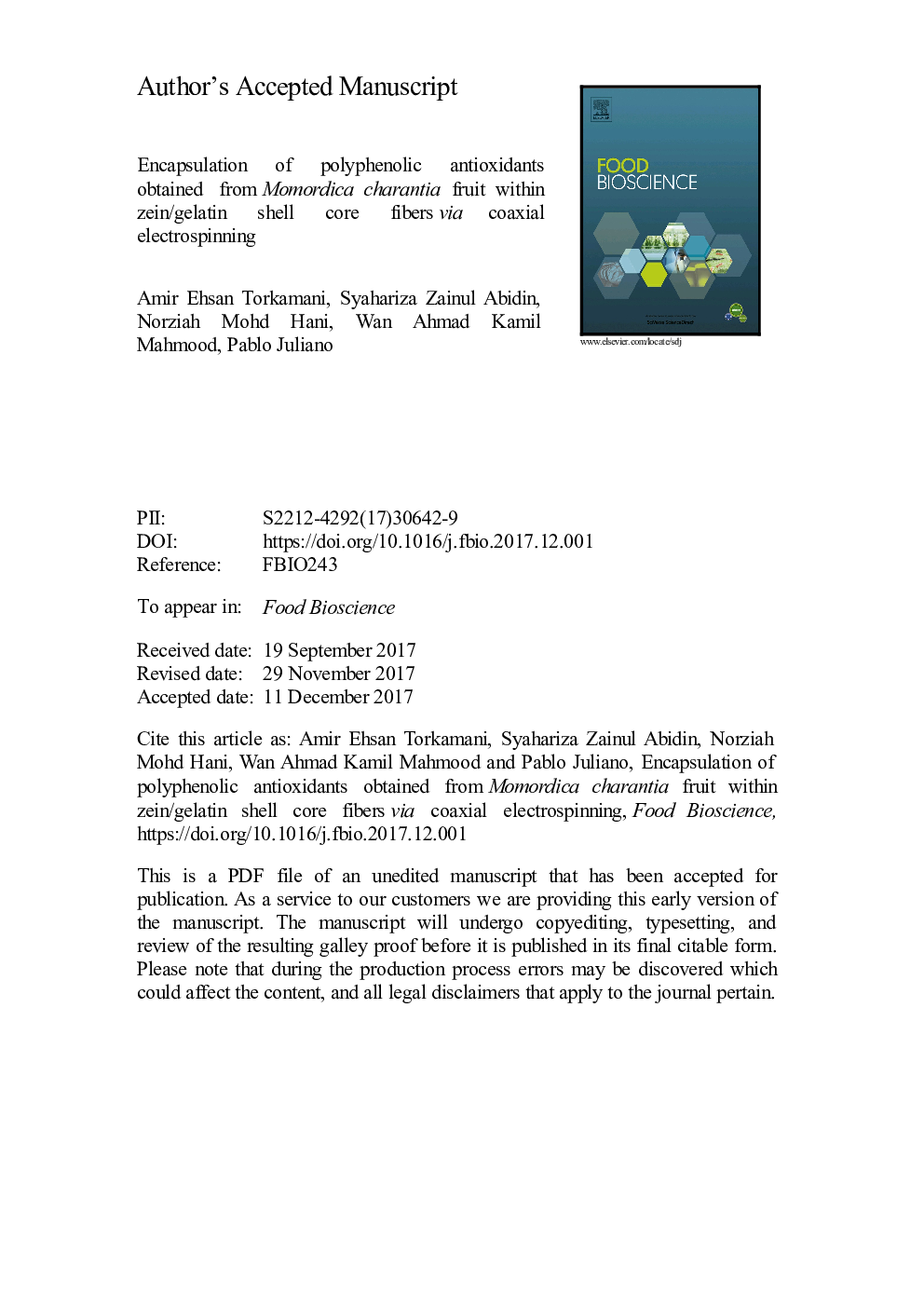| Article ID | Journal | Published Year | Pages | File Type |
|---|---|---|---|---|
| 6488954 | Food Bioscience | 2018 | 27 Pages |
Abstract
This study dealt with fabricating and characterizing nano fibrillar bilayer structures encapsulated with Momordica charantia fruit extract. Coaxial shell core zein/ gelatin nano fiber structure was successfully produced at 20Â kV, 0.5Â ml/h and 10Â cm of voltage, flow rate and emitter/collector distance, respectively. The gelatin fiber was encapsulated with bitter gourd extract (BGE) at 5-15% (w/w%) loading rate. Statistical analysis of scanning electron micrographs showed the encapsulation process resulted in a non-significant (P > 0.05) increase in average fiber diameter. Morphological analysis through transmission electron microscopy (TEM) confirmed fabrication of the bilayer structure as well as encapsulation of the extract. Furthermore, spectroscopic analysis by FTIR illustrated the formation of composite coaxial fibers through electrospinning process. However, encapsulation at various loading rates did not result in any chemical interaction between core and wall materials. Thermogravimetric graphs of encapsulated fibers, at all core loadings, illustrated an additional third phase, absent in non-encapsulated fibers, which confirms encapsulation occurrence. Moreover, glass transition temperature decreased in both first and second heating scans of differential scanning calorimetry (DSC) thermograms due to BGE encapsulation process. Furthermore, coaxial encapsulation process managed to conserve an average of 88% of antioxidative content and potency in all cases. Besides this, shelf stability of the encapsulated extract at both refrigerated and ambient conditions were significantly extended when compared to their non-encapsulated counterparts.
Related Topics
Physical Sciences and Engineering
Chemical Engineering
Bioengineering
Authors
Amir Ehsan Torkamani, Zainul Abidin Syahariza, Mohd Hani Norziah, Ahmad Kamil Mahmood Wan, Pablo Juliano,
